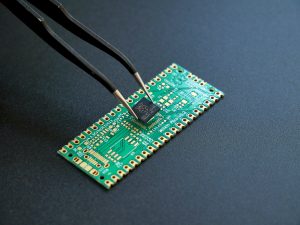Malaysia is seeking to attract at least 500 billion ringgit ($107 billion) in investment for its semiconductor industry, Prime Minister Anwar Ibrahim said yesterday, as he launched the country’s National Semiconductor Strategy.
Speaking at the Semicon Southeast Asia 2024 trade show in Kuala Lumpur, the Malaysian leader said that his government intended to “create an ecosystem driven by dynamic Malaysian firms and world-class talent,” Nikkei Asia reported.
“Today, I offer our nation as the most neutral and non-aligned location for semiconductor production to help build a more secure and resilient global semiconductor supply chain,” he said.
To support its goals, the government will offer fiscal support of at least 25 billion ringgits ($5.3 billion), to offer incentives to foreign investors and train 60,000 Malaysian engineers to meet industry demand.
The National Semiconductor Strategy is an attempt to consolidate Malaysia’s status as a major player in the semiconductor industry, which is based around the sprawling industrial parks of Penang and Kulim. In recent years, the country has attracted multibillion-dollar investments from leading international firms. These include the U.S. chipmaker Intel, which announced in 2021 it would build a $7 billion 3D chip packaging plant in the country, and the German firm Infineon, which said last year that it would invest 5 billion euros ($5.4 billion) to expand its existing plant in Malaysia, which creates chips for electric vehicles. The Western firms AT&S, Nvidia, Texas Instruments, Ericsson, and Bosch are all expanding their operations in Malaysia, as are the Chinese companies Xfusion, StarFive, and TongFu Microelectronics.
Malaysia now accounts for 13 percent of global semiconductor testing and packaging, and is already the world’s sixth largest exporter of semiconductors, according to a report in the New York Times. However, most of this focuses on the lower end of the value chain, such as assembly and testing. The current initiative is a clear attempt to move upward into more complex and technologically sophisticated processes. Anwar said yesterday that Malaysia wants to establish at least 10 local companies in design and advanced packaging for semiconductor chips, and “move to the frontier.”
“We have a strong capacity to diversify and move higher in the value chain… to move towards even more high-end manufacturing, semiconductor design, and advanced packaging,” he said, according to Reuters.
Anwar’s announcement reflects the growing competition among Southeast Asian governments to attract Western investors, as many begin to diversify their operations away from China. (Anwar’s description of Malaysia as a “neutral and non-aligned location” made this goal explicit.)
In this race, Malaysia enjoys an enviable head start as a longtime regional leader in electrical and electronics (E&E) manufacturing, including in semiconductors, which dates back to the early 1970s.
At the time, the government set up a free-trade zone on the island of Penang, building industrial parks and other infrastructure, while offering tax breaks and other incentives to the world’s largest E&E companies. In 1972, Intel opened its first overseas manufacturing facility in Penang. Litronix, known today as ams OSRAM, did so the same year.
Malaysia’s status as a manufacturing center has stagnated somewhat since the late 1990s, due to the impact of the Asian financial crisis and the emergence of China as a major competitor. According to one analysis by AMRO, the manufacturing sector’s share of GDP declined from 31 percent in 1999 to 23 percent in 2010. The sector’s share of employment fell from 23 percent to 17 percent over the same period.
But Malaysia’s long experience in back-end semiconductors production gives it a distinct advantage over competitors like Vietnam, which are seeking to build the industry more or less from scratch. None of this guarantees success, but in the race to become the next regional tech superpower, Kuala Lumpur for the moment enjoys pole position.

































